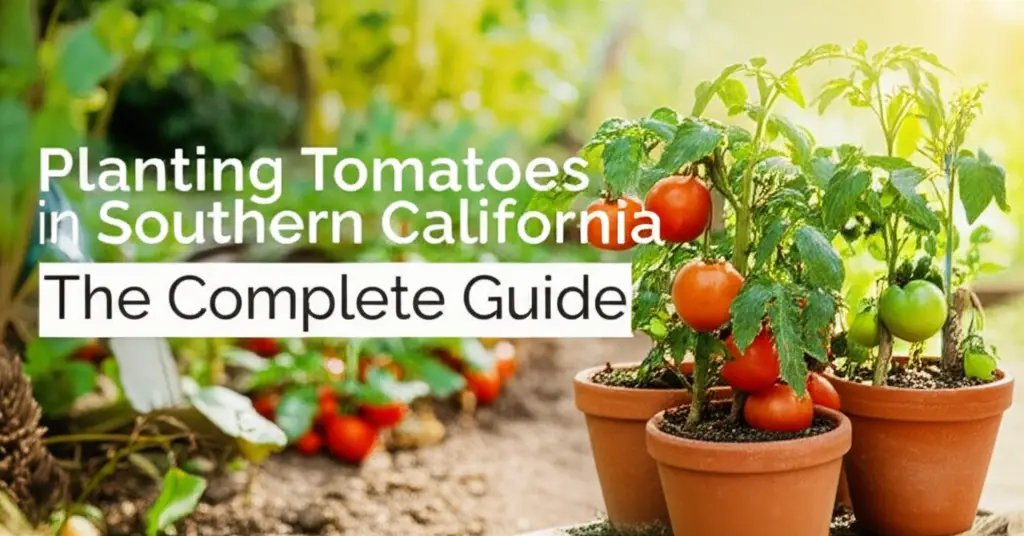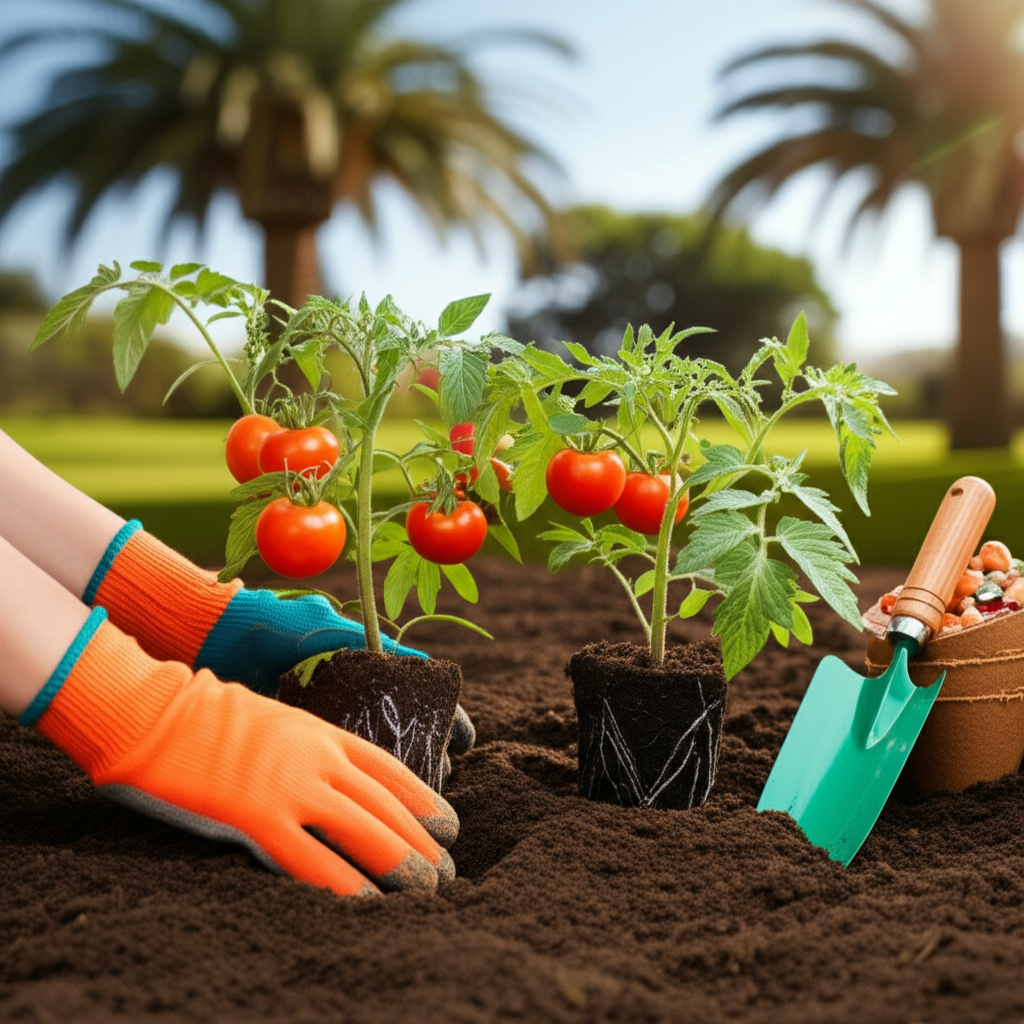
Summary: Knowing when to plant tomatoes in Southern California is crucial for a successful harvest. This guide provides a comprehensive overview of the ideal planting times, considering the unique microclimates and frost dates across the region. From choosing the right variety to protecting your plants from pests and diseases, we cover everything you need to know for a bountiful tomato season.
Introduction: Tomato Gardening in the Golden State
Southern California’s Mediterranean climate, with its warm, sunny days and mild winters, offers a long growing season, making it a haven for tomato lovers. However, the region’s diverse microclimates, ranging from coastal areas to inland valleys and deserts, mean that the best time to plant tomatoes varies considerably. Understanding these nuances is the key to a thriving tomato patch. This guide will help you determine the optimal planting window for your specific location so you can enjoy juicy, homegrown tomatoes throughout the year.
Understanding Southern California’s Microclimates
Southern California is not a monolithic climate zone. Coastal areas experience cooler temperatures moderated by the Pacific Ocean, while inland valleys can get significantly hotter, especially during summer. Desert regions are characterized by extreme temperature swings between day and night. These microclimates greatly influence when you should plant tomatoes.
- Coastal Regions: Coastal areas like San Diego, Los Angeles, and Ventura counties enjoy milder temperatures and a longer growing season. You can often plant tomatoes earlier in spring and later into fall.
- Inland Valleys: Inland valleys such as the San Fernando Valley, Inland Empire, and Coachella Valley experience hotter summers and cooler winters. Planting times are typically shifted later in spring to avoid late frosts and earlier in fall to allow for harvest before the first frost.
- Desert Regions: High desert areas like Palm Springs and Joshua Tree have extreme temperatures. Tomatoes are often planted in late winter/early spring for a spring harvest or in late summer/early fall for a fall harvest, avoiding the intense summer heat.
When to Plant Tomatoes Based on Your Location
The general rule of thumb is to plant tomatoes after the last frost date has passed and the soil has warmed up. While this usually falls between March and May, the specifics vary by region.
| Region | Last Frost Date (Approximate) | Ideal Planting Time |
|---|---|---|
| Coastal Areas | February – March | March – May, September – October (for a fall crop) |
| Inland Valleys | March – April | April – May, September (for a fall crop) |
| Desert Regions | December – January | February – March, September – October (for a fall crop) |
Choosing the Right Tomato Variety
The variety of tomato you choose also influences the planting time. Some varieties are better suited to cooler conditions, while others thrive in the heat.
- Early Season Varieties: These varieties mature quickly (50-60 days) and are ideal for cooler coastal areas or for getting an early start in the season. Examples include ‘Early Girl’, ‘Stupice’, and ‘Sun Gold’.
- Mid-Season Varieties: These are the most common types and mature in 70-80 days. They are suitable for a wide range of climates. Examples include ‘Beefsteak’, ‘Better Boy’, and ‘Roma’.
- Late-Season Varieties: These varieties take longer to mature (80-100 days) and are best suited for areas with long, warm growing seasons. Examples include ‘Brandywine’, ‘Mortgage Lifter’, and ‘Cherokee Purple’.
Preparing Your Soil and Planting Your Tomatoes
Before planting, prepare your soil by adding compost or other organic matter. This improves drainage and provides essential nutrients. Ensure the soil pH [See our guide on soil pH] is between 6.0 and 7.0.
- Seedlings vs. Seeds: Starting tomatoes from seed indoors 6-8 weeks before the last frost gives you a head start. Alternatively, you can purchase seedlings from a local nursery. [More on starting seeds indoors].
- Planting Depth: Plant seedlings deeply, burying the stem up to the first set of true leaves. This encourages stronger root development.
- Spacing: Space tomato plants 18-24 inches apart, depending on the variety, to allow for adequate air circulation.
Tomato Plant Care in Southern California
- Watering: Water deeply and consistently, especially during hot, dry periods. Avoid overhead watering to prevent fungal diseases. [See our guide on efficient watering methods].
- Fertilizing: Feed your tomato plants regularly with a balanced fertilizer. [Our recommended fertilizers for tomatoes].
- Staking or Caging: Support your plants with stakes or cages to prevent them from sprawling on the ground.
Pest and Disease Control
Southern California gardeners may encounter various pests and diseases affecting tomato plants, such as aphids, whiteflies, tomato hornworms, blight, and wilt. Implementing preventative measures like companion planting, crop rotation, and using organic pesticides can help protect your plants. [Learn more about pest and disease management].
FAQs: When to Plant Tomatoes in Southern California
- Q: Can I plant tomatoes in winter in Southern California?
- A: In coastal areas with mild winters, you might be able to grow tomatoes throughout the year. However, production will be slower during the cooler months.
- Q: When should I start tomato seeds indoors?
- A: Start your tomato seeds indoors 6-8 weeks before your anticipated last frost date.
- Q: What are the best tomato varieties for hot inland valleys?
- A: Heat-tolerant varieties like ‘Heatwave’, ‘Solar Fire’, and ‘Phoenix’ are good choices for hot inland valleys
Conclusion
Growing tomatoes in Southern California can be a rewarding experience. By understanding the specific microclimate of your region and following the tips outlined in this guide, you can enjoy a bountiful harvest of delicious, homegrown tomatoes. Remember to select the right variety for your location, prepare your soil properly, and provide adequate water and nutrients throughout the growing season. Happy gardening!

